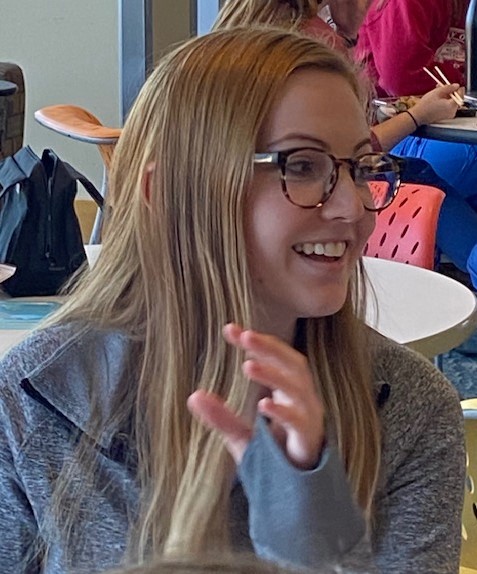Emma Axtell is a second-year Physician Assistant student from Oklahoma City, who is serving her third semester as a peer tutor. In this post, she shares some of the lessons she has learned through being a tutor and how she came to love teaching.

When I first got the email, asking if I was interested in peer tutoring, my mind was focused on one thing: extra money. As a poor PA student, the thought of having a few more dollars in the bank was exciting. Plus, I assumed this would be a perfect way for me to review material for our ever-looming certification exam. So, naturally, I told them I was interested. Selfishness, party of one – here I am.
I did the training and the paperwork. And then I got my first group of students. And God bless them, because I felt like I had no idea what I was doing. I’ll never forget my first session – I asked the group a question and they just stared at me like I had three heads. It was at that moment when I wasn’t sure if this was for me. Like, really sure this was not for me.
However, we persevered through those first couple of sessions and we finally got to a point where we were making progress. We worked through figuring out everyone’s learning styles and then I switched my teaching styles to match theirs. And once we had all of that figured out, we really started rocking it and we started having fun. The moment they started acing questions they didn’t know the answer to, but could deductively reason out, was the best moment. Closely followed by being able to celebrate successes together. The amount of joy this whole process has brought me is indescribable – which is never something I thought I wound ever say about tutoring.
As this school year is coming to a close soon, it’s bittersweet. I’ve enjoyed tutoring so much and look forward to it, even during the toughest weeks. I’ll be sad when it’s all over. But of course, I’m thrilled for my students who are about to start the most exciting part of PA school – clinicals. I know they are going to get out in the world and excel. And that is the best part about this whole process; seeing the students come from a poor place academically to developing into strong, successful, future providers who are doing well academically. And I am truly honored to be a stepping-stone to their path of success.

This process had made me realize that’s it’s okay to say yes to something you aren’t sure you will like. And it’s okay to struggle in the beginning when trying new things. And it’s okay to still not know all the answers when answering tough questions. It’s all a learning process. And I’m grateful for these struggles that have made me into a better student and provider.
I’ve never considered myself much of a teacher. But after this experience, working in PA education is definitely something I would consider in the future. Although patient care is my first love, teaching has become a close second.
So Professor Williams, let me know if the Physician Assistant Program needs someone to guest lecture in the future. I’m interested!
Contributing Author Emma Axtell, MBA, PA-S

